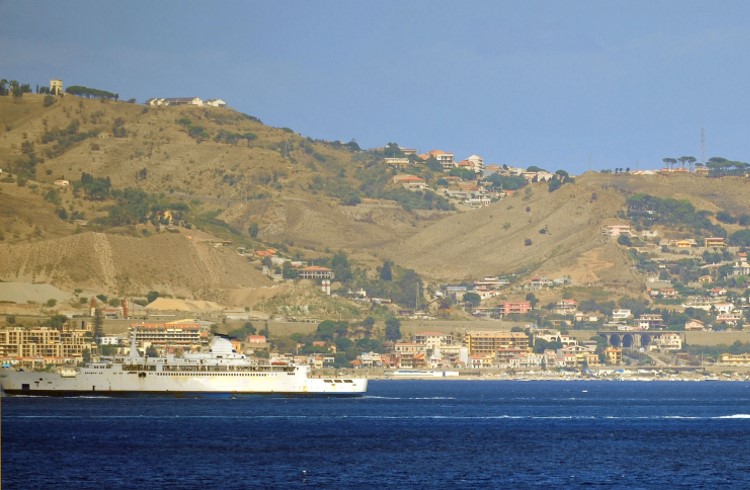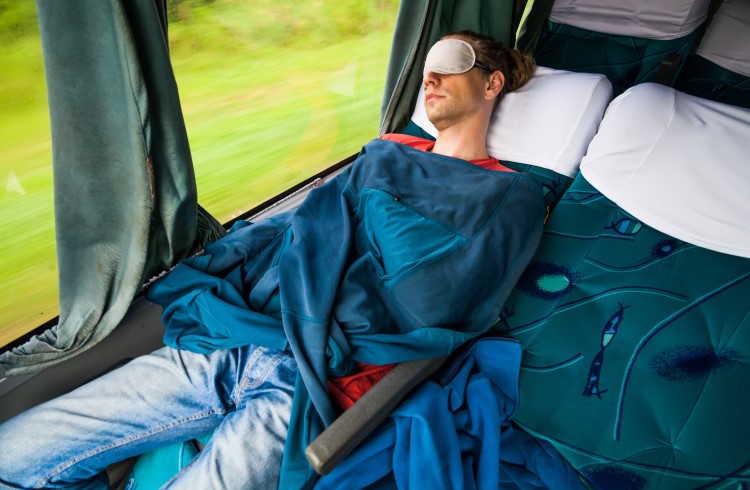Why Traveling Overnight Lowers Your Carbon Emissions
It’s no secret that transport and accommodation are the two biggest carbon emitters when we travel. By combining the two we can slash our travel footprint.
 Photo © Getty Images / Oscar Wong
Photo © Getty Images / Oscar Wong
Whether by train, boat, or coach, traveling overnight can be lots of fun – you’re likely to see more and absorb more of the local culture than traveling by plane and staying in hotels every night. Here are some tips for smooth overnight journeys. Most of all, by combining travel and accommodation, you're reducing your travel carbon footprint.
- Plan ahead
- Save a night’s worth of natural resources
- The wonder of train travel
- Classic ‘sleeper’ trains
- Overnight journeys by water
- Don’t discount bus travel
Plan ahead
It pays to plan your itinerary in advance, identifying journeys long enough for overnight travel and seeing what’s on offer.
By planning ahead, you won’t end up spending the night on a train station bench. You’ll want reasonably comfortable, safe transport so that you can wake up refreshed at your destination.
When traveling through Europe as a student many years ago – on the tiniest of budgets – we made the most of our rail pass by traveling through the night whenever we could. We slept upright through France and then prone on Italian couchettes. Once, we laid out on the deck of a Greek ferry as it navigated rocky seas from Italy, by way of Corfu.
While we did save lots of money, many of my memories of the world’s most beautiful cities are hazy, glimpsed through a bleary, sleep-deprived brain.
Now I’m weighing up another trip through Europe, but I figure if I pay for a cabin on the overnight ferries and trains, I’ll still be saving money and reducing my carbon impact if the travel does double duty as my accommodation.
Save a night’s worth of natural resources
A stay in a hotel, motel, apartment, or Airbnb involves energy and hot water use as well as towel and bedlinen changes, all of which chew through natural resources.
In fact, the average hotel room uses 68.5lbs (31.1kg) of carbon per room per night according to the Hotel Carbon Measurement Initiative (HCMI), an initiative from the Sustainable Hospitality Alliance.
By traveling through the night, we’re saving most of that while also enjoying a richer experience.
The wonder of train travel
“Trains are wonderful.... To travel by train is to see nature and human beings, towns and churches and rivers, in fact, to see life,” said Agatha Christie.
The train is also the least polluting form of travel – other than making your way on foot – and there are often multiple options for overnight travel, from the most basic to deluxe.
Another bonus of trains is that you often arrive in the heart of a city, not an airport, which can be miles out, meaning yet another bus or taxi as well as more money and carbon emissions.
Then there’s the delight of bedding down in one place and waking up in an entirely different place, perhaps even a different country, a different language and landscape.
Classic sleeper trains
Europe boasts a number of classic sleeper routes, such as Vienna to Rome (around 11 hours). The NightJet service operated by Austrian Federal Railways (ÖBB) got even better in 2023 with innovative new trains going into service.
Another stunning route is from Stockholm to Narvik at the Arctic Circle in northern Norway (22 hours). Or there’s a night train from Rome to Sicily with the train boarding a boat to make the final crossing across the Straits of Messina.

For multiple trips all over Europe, consider purchasing a Eurail pass – or Interail for European citizens.
There are a couple of UK sleeper journeys I'd like to do, too, including the Caledonian Sleeper, departing London Euston 10 minutes shy of midnight and arriving in Edinburgh at daybreak.
The ‘Night Riviera’ from London to Penzance leaves Paddington in the late evening. You’ll wake up a world away as you glimpse sunrise and the glorious views of St Michael’s Mount in the far west of Cornwall.
Looking to Asia, one of my favorite train journeys is through Vietnam. This long, skinny country is in many ways ideal for a long train trip from one end to the other.
The Reunification Express links Ho Chi Minh City to the capital Hanoi in the north, two distinctly different cities culturally. There’s so much to see along the way as you wind your way along the South China Sea – temples, rice paddies, historic towns. Not the height of luxury but cheap, air-conditioned, and reasonably comfortable on the softer bed options.
Overnight journeys by water
There’s a lot of appeal to an overnight stay on a boat, but cruising doesn’t necessarily equal environmental travel, even as some companies are turning their attention to sustainability. It’s difficult to justify the huge fuel footprint of behemothic vessels which can be as much as, or more than, flying per passenger.
(Friends of the Earth has a scorecard that rates the industry. It’s worth noting that none of the cruise companies evaluated score higher than a C+ in 2022.)
But it is possible to opt for smaller companies who operate more modest vessels, barges, or sailboats and have a strong environmental focus, usually outlined on their website.
Take cruise company Uniworld which has pledged to become carbon neutral by 2030. Initiatives include using 50 percent of electricity renewable by 2025, working with Leanpath to reduce food waste onboard, and banning more than 60 types of single-use plastics. Their trips include such adventures as Cairo to Aswan and back again over 12 days, and 13 days on the Ganges India, from New Delhi to Kolkata.
But for more budget options, you could simply add in some overnight ferry trips to your itinerary, either booking a sleeper cabin or a travel recliner.
Consider traveling to China from Japan aboard the Shanghai Ferry from Osaka. Overnight cabins are basic but aboard you’ll find Japanese-style baths, karaoke, and a mah-jongg lounge.
If you’re traveling from France to the UK, you could go the roundabout way via Ireland. Take the overnight ferry from Cherbourg to Rosslare (17 hours), then travel by train to Dublin to catch another overnight ferry to Liverpool.
Or to cut out some of the overland travel between Croatia and Italy, there’s the Split to Ancona ferry which takes 12 hours and offers recliners to fairly luxurious private cabins with ensuite bathrooms.
It’s also worth remembering that many ferries are covered by the Eurail pass, so check before you travel.
Don’t discount bus travel
Perhaps it’s the least glamorous of the overnight options, but coach or bus travel is often the cheapest and it doesn’t have to mean a rough night upright.
This is a particularly worthwhile option when venturing through South America. With lots of ground to cover, it’s a smart option by bus and can be extremely cheap, as well as stunningly scenic.

For example, an overnight journey from Buenos Aires to Bariloche on a coche cama – or bed bus – with its reclining seats and in some cases, a hot meal. Even with more luxurious options, it’s still cheaper than flying or accommodation, and by carrying many passengers is more sustainable than a car.
When booking your next long trip, think about incorporating at least a few overnight travel segments to cut your travel footprint. You’ll be opening yourself up to new experiences too, and isn’t that what travel is about?
Related articles
Simple and flexible travel insurance
You can buy at home or while traveling, and claim online from anywhere in the world. With 150+ adventure activities covered and 24/7 emergency assistance.
Get a quote

No Comments